Figures & data
Figure 1. Modeling domains (left panel) for PinG simulations. The outer 36-km domain provides the boundary conditions for the inner 12 km domain used in the simulations. The right panel shows the locations of the point sources treated with PinG.
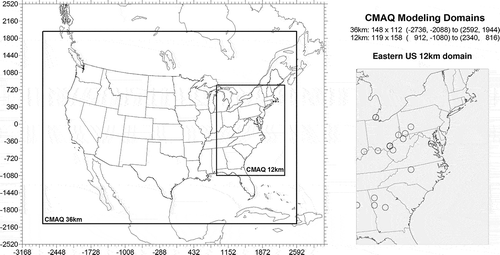
Table 1. Stack parameters and emissions from point sources selected for PinG treatment
Table 2. Model performance statistics for July 1 to 15, 2005, 1-hr average ozone mixing ratios, using 40 and 60 ppb cutoffs on observed ozone concentrations
Table 3. Model performance statistics for January 1 to 15 and July 1 to 15, 2005, 24-hr average PM2.5 concentrations
Figure 2. Locations of AQS stations within a 9 by 9 (108 km by 108 km) grid cell region around each PinG source.
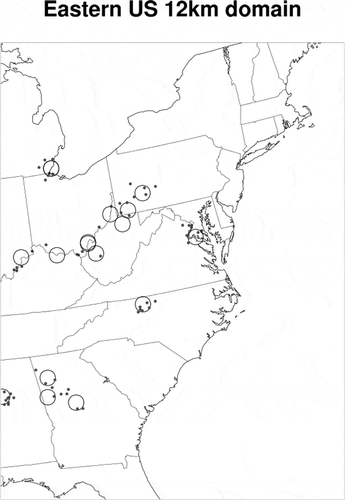
Table 4. Model performance statistics for July 1 to 15, 2005, 1-hr average ozone mixing ratios at AQS monitors within a 5 by 5 grid cell domain around each PinG point source, using 40 and 60 ppb cutoffs on observed ozone concentrations
Table 5. Model performance statistics for July 1 to 15, 2005, 1-hr average ozone mixing ratios at AQS monitors within a 9 by 9 grid cell domain around each PinG point source, using 40 and 60 ppb cutoffs on observed ozone concentrations
Figure 3. Time series of hourly surface ozone mixing ratios at two AQS monitoring sites in a 108 by 108 km region around PinG sources. The Morgantown, WV, site is about 23 km south of the nearest source, while the Holbrook, PA site is about 31 km west of the nearest source.
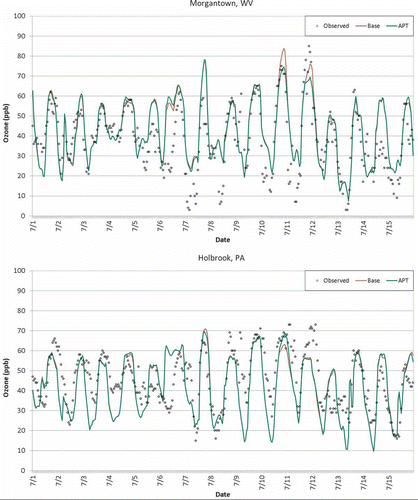
Figure 4. Predicted source contributions to maximum daily 8-hr average surface ozone mixing ratios (ppb) in the first model layer (center at about 20 m from ground level) from the base CMAQ (left panel) and CMAQ-APT (middle panel) and differences between the APT and base model predicted ozone concentrations (right panel) for July 11, 2005 (top panels), and July 12, 2005 (bottom panels). The circles in the plots represent the point sources selected for PinG treatment.
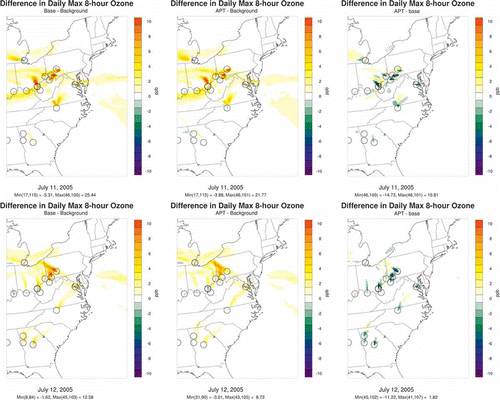
Figure 5. Predicted source contributions to 24-hr average surface PM2.5 concentrations (μg/m3) in the first model layer (center at about 20 m from ground level) from the base CMAQ (left panel) and CMAQ-APT (middle panel) and differences between the APT and base model predicted PM2.5 concentrations (right panel) for January 9, 2005 (top panels), and January 15, 2005 (bottom panels). The circles in the plots represent the point sources selected for PinG treatment.
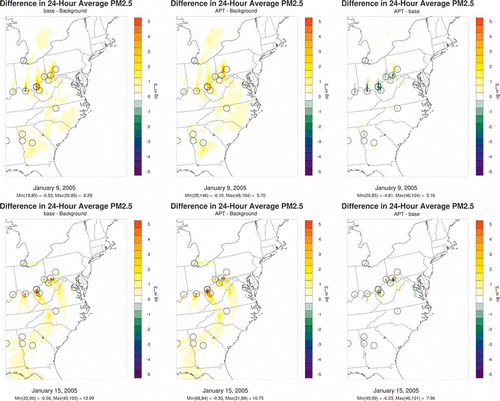
Figure 6. Predicted source contributions to 24-hr average surface PM2.5 concentrations (μg/m3) in the first model layer (center at about 20 m from ground level) from the base CMAQ (left panel) and CMAQ-APT (middle panel) and differences between the APT and base model predicted PM2.5 concentrations (right panel) for July 11, 2005 (top panels), and July 12, 2005 (bottom panels). The circles in the plots represent the point sources selected for PinG treatment.
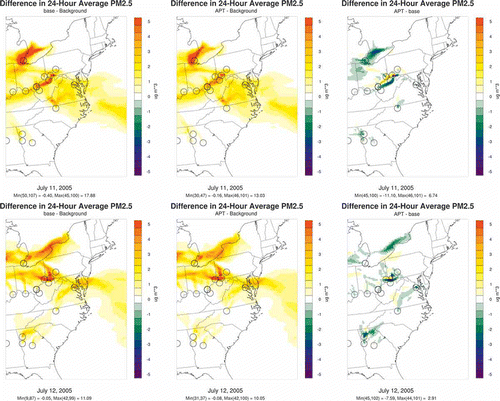
Figure 7. Predicted source contributions to 15-day total sulfur deposition (eq/ha) from the base CMAQ (left panel) and CMAQ-APT (middle panel) and differences between the APT and base model predicted total sulfur deposition (right panel) for January 2005 (top panels) and July 2005 (bottom panels). The circles in the plots represent the point sources selected for PinG treatment.

